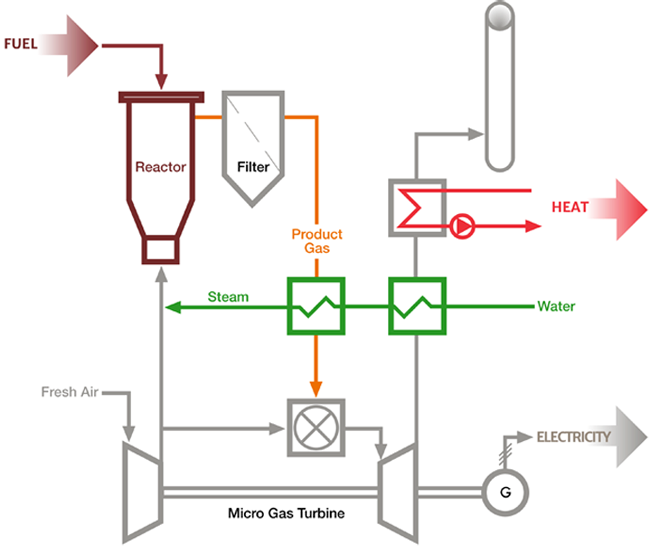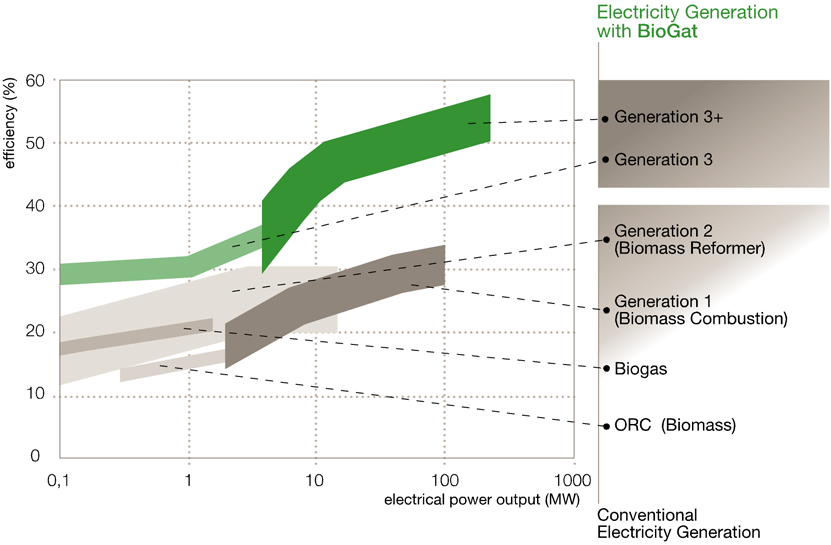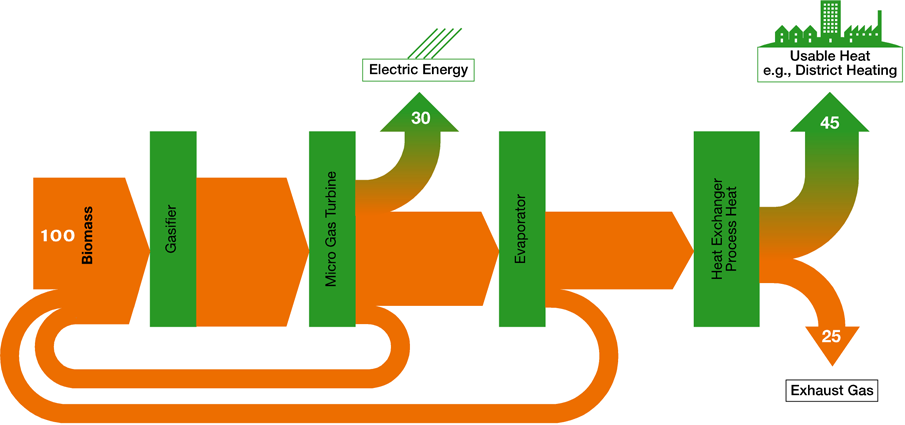Gasification process without gas washing facility

Biomass gaslfication is often associated with a sticky, black substance called tar, which is responsible for clogging pipes and heat exchangers, resulting in high operating and maintenance costs.
In the BioGaT process tar is not a problem, and – better than that – does not even occur. The process is based on a simple idea which renders obsolete such complex gas washing facilities. The producer gas is never cooled down below a temperature of 350°C. Tars only condense below this temperature. Above it, they are in a gaseous state and neither clog nor stick. As a matter of fact, they even act as part of the fuel, releasing their chemical energy in the combustion chamber of the gas turbine, thus producing electricity.
![]()
Superior electrical efficiency

BioGaT gasification technology offers a new dimension in electrical efficiency for small, thermal power stations operated with solid fuel. Whereas the maximum reachable efficiency normally declines with decreasing power output of the unit (please refer to the chart), BioGaT reaches a remarkable efficiency of 30%, a level only reached in conventional power technology with plants 10 times the size of BioGaT.
![]()
Fully integrated gas turbine

A conventional gas engine only works with cool gases and cannot handle high-temperature gas produced by the BioGaT gasifier. BioGaT therefore uses a micro gas turbine to convert the chemical energy of the gas without prior cooling into electricity.
However, we have taken this idea a step further by completely integrating the gas turbine into the gasification process: air from the gas turbine compressor is used to supply the gasification chamber with oxygen, which then sends the producer gas – without further compression – into the combustion chamber of the gas turbine.
This integration is crucial for the electrical efficiency of the plant: the complete energy flow passes through the gas turbine, thus contributing to the transformation into electric energy.
![]()
Flexible feedstock due to fluidized bed technology

The gasification process takes place in a fluidized bed reactor: Air and re-circulated producer gas are blown through a bed of sand (or similar material), creating a state similar to a fluid. Solid fuel is tipped onto the hot bed, where partial combustion as well as the gasification take place.
Because a fuel particle can stay as long in the bed as it needs to be completely gasified, the fluidized bed technology introduces a high flexibility for inhomogeneous fuels.
Integrated steam generation

To accelerate the transformation of coke in the reactor, steam is produced from the waste heat of the gas turbines and injected into the reactor. This steam can also be used for external heating applications, in case heat is needed at temperature levels above those served by hot water systems.

